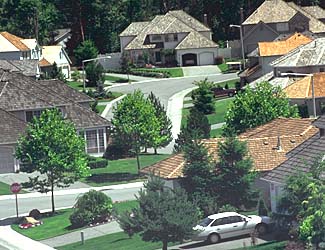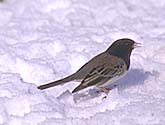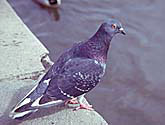
Home |
About Us |
How to Participate |
Biodiversity Modules |
Projects |
Maps |
News |
Resources

Home |
About Us |
How to Participate |
Biodiversity Modules |
Projects |
Maps |
News |
Resources
|
Definition of "Developed" - General Code 200: Significant human influence. Surface development includes buildings, pavement, etc. Excludes agricultural land and clear cuts. |
Developed: Medium Residential Density (221)
 | |
| Descriptive Habitat Code: This developed (2) habitat has 50% development (2) in a residential area (1). | |
| Photo: KMD | |
 Long-toed salamander Ambystoma macrodactylum Code: AMMA Photo: WDFW |
Distribution and Habitat: It is found in semi-dry sagebrush areas, rocky shores of lakes, alpine meadows, and even developed areas, in rotting wood and under rocks near lakes, ponds, wetlands and other areas of standing water. Diet: Interesting
fact: |
 Eastern gray squirrel Sciurus carolinensis Code: SCCA Photo: KMD |
Distribution and Habitat: It is found throughout deciduous woodland areas of North America as well as being a common inhabitant of developed areas of towns, cities, residential and even industrial areas. Diet: Interesting fact: |
 House sparrow Passer domesticus Code: PADO Photo: RA |
Distribution and Habitat: It is native to Europe and was introduced into the United States in 1850 where it has become a permanent fixture in developed areas. Diet: Interesting fact: |
 House finch Carpodacus mexicanus Code: CARME Photo: RA |
Distribution and
Habitat: It is found in developed (urban) areas. Diet: Interesting fact: |

Dark-eyed junco Junco hyemalis Code: JUHY Photo: RA |
Distribution and Habitat: It is found in low to medium developed (urban) areas. Diet: Interesting fact: |
 Rock dove Columba livia Code: COLI Photo: RA |
Distribution and Habitat: It is found in most medium-sized and large cities of the United States and in the Columbia Basin. Diet: Interesting fact: |
 Virginia oposum Didelphis virginiana Code: DIVI Photo: RA |
Distribution and Habitat: It is found in a wide variety of habitats, including temperate and tropical forests, mountains, grasslands and urban (developed) settings. Diet: Interesting fact: |
Home |
About Us |
How to Participate |
Biodiversity Modules |
Projects |
Maps |
News |
Resources